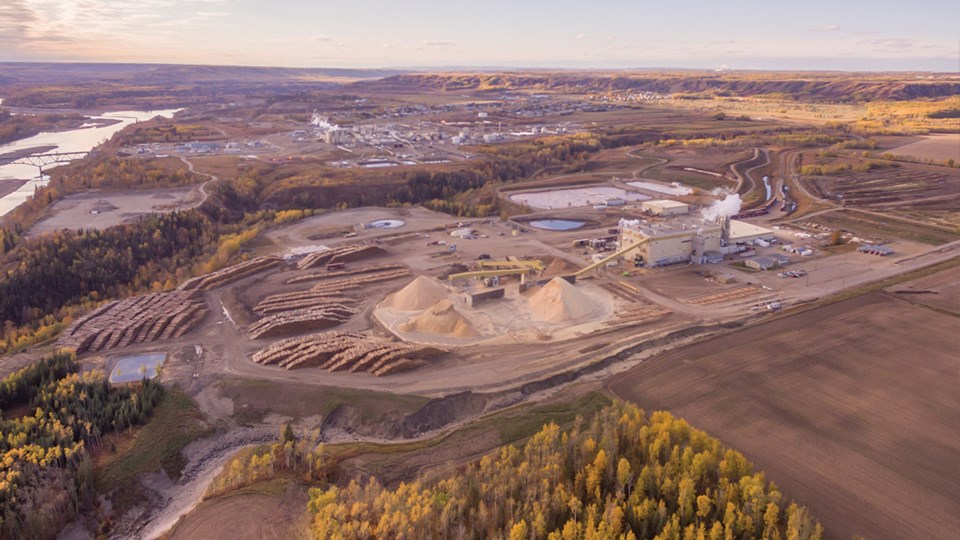If Canfor is ever to reopen its mill in Taylor, it won’t be producing pulp.
That’s because the company says ongoing lack of fibre supply in the Peace region has made the business of making chemi-thermomechanical pulp unviable for the local facility — formally ending last week 35 years of production in the small community of 1,300 along the Peace River.
The mill has been curtailed since last February, the company announcing Tuesday, Feb. 28, that it “does not see a path forward” to restarting the facility, but that it has begun exploring an alternative use for the site instead.
“It’s a good facility in a good location,” Canfor Pulp President and CEO Kevin Edgson told investors last week, revealing only that the company is currently “collecting options” on what its future use could be.
“I would hope we would find a solution very quickly but, at this point, it will really be determined by how quickly we can figure out what else we might do there and then how quickly we might be able to execute," he said.
The mill was opened by Fibreco Pulp in 1988, and Canfor says employment ended for the majority of workers last year “due to the anticipated length of the curtailment and we worked to support them through the transition.”
“A small team is providing security and asset preservation on site. These positions will continue to be maintained,” a spokesperson confirmed.
It’s the second pulp mill to be shuttered so far this year in northern B.C.; the pulp line at Canfor’s Prince George pulp and paper mill will be permanently closed at the end of this month. Last week’s news also follows on January’s announced closure of the sawmill and pellet plant in Chetwynd, to shut down in April, due to what Canfor says is, again, a lack of fibre in the region.
“By reducing our operating footprint, we have better aligned our operations with the available residual supply in the Prince George region,” Edgson said.
“We believe these difficult decisions will support the long term sustainability of the company and allow us to optimize the economically available fibre supply in British Columbia, operating on a more consistent basis that improves our operating margins and performance.”
Despite the lingering uncertainty for the mill's future, Taylor Mayor Brent Taillefer is hopeful to see it fire back up in some fashion.
“Anytime something of this magnitude closes, it’s a big impact, not just for the community of Taylor, but the whole region,” he said. “A lot of those workers, not just directly at the mill, but hauling chips or working in the yard, they also are not working. It certainly is an impact and not something we like to see.”
Taillefer says the mill is still valuable heavy industrial land with rail access, and close to Fort St. John as the major centre in northeastern B.C.
“Canfor Taylor Pulp has always been a good member of our community and we’ve always had a good relationship with them. If there’s something we can assist them with, we certainly would,” he said. “If another proponent comes forward, we would certainly look to have the same relationship with had with Canfor Taylor Pulp.”
He adds the district will renew talks about its official community plan later this year.
“It’s a community plan so it could play into the community having a say in what they would like to see there, or what some ideas can come from the community as well to maybe see a different use at that mill,” Taillefer said.
Combined with other mill closures in Houston and Port Alberni this year, 850 jobs have been lost in forestry over the last two months. Peace River North MLA Dan Davies says the latest closure in Taylor reflects poor forest policy by the NDP government.
“We’ve seen forestry go to shambles in our province over the last five years due to inability to get permits and lack of support by government for our resource sectors,” said Davies.
Canfor Pulp reported an adjusted operating loss of $59 million for its pulp operations in 2022, and an adjusted net loss of $43 million, or $0.66 per share. The company says pulp production in the fourth quarter was “faced with fibre shortages and challenging winter weather conditions”



